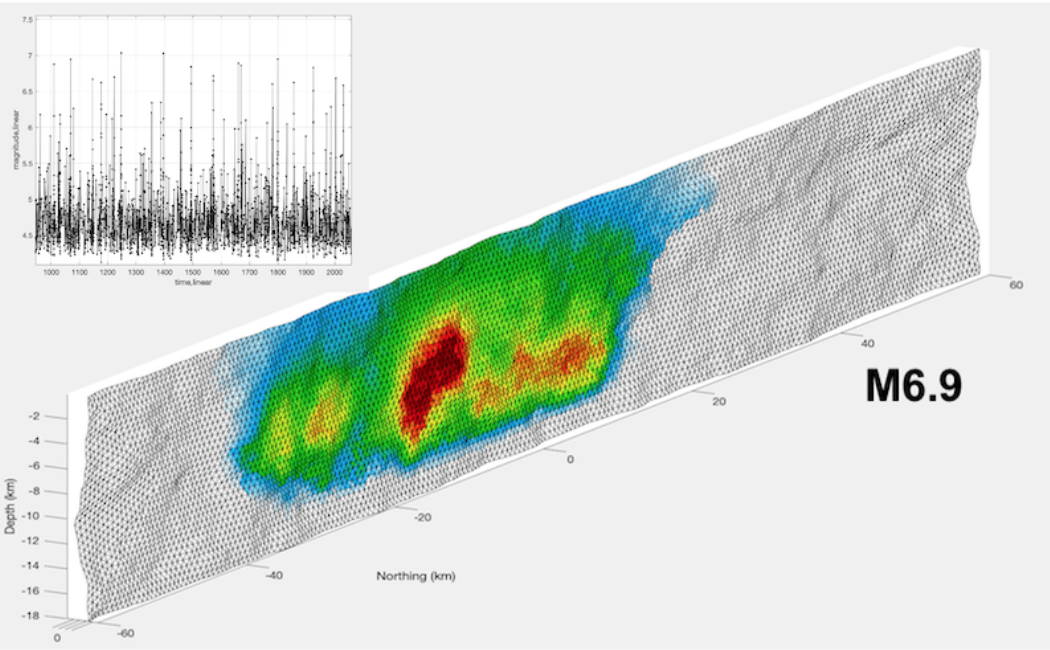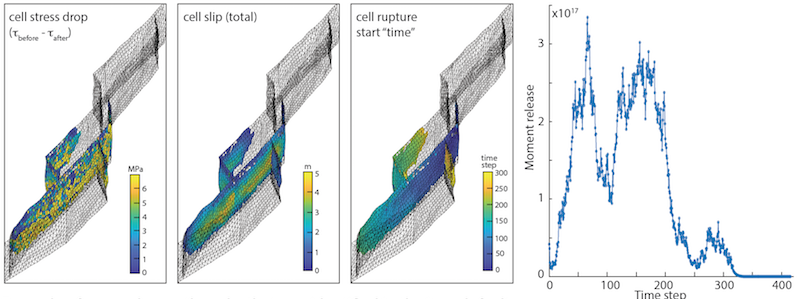


A prime goal in earthquake geology and geophysics is to provide (better) estimates on the timing and size of future earthquakes along a fault of interest. Reaching this goal is everything but trivial. One reason that makes it so difficult to provide these estimates (e.g., on the recurrence of large and potentially devastating earthquakes) is that seismic catalogs are -relative to typical or expected return times of large earthquakes- too short. To circumvent this problem, we may generate seismic catalogs synthetically by using our current knowledge of the rupture process and implementing it into computer simulations.
For this task we developed MCQsim -a multi-cycle earthquake rupture simulator that generates long sequences of earthquakes along predefined geometrically complex faults or fault systems. This tool can be used in a variety of ways. It allows to perform careful parameter space investigations, indicating which of the many processes that influence rupture initiation, propagation, and termination are dominant and therefore require most attention in order improve estimates of future fault behavior. It also allows to compute the probabilities for the occurrence of an earthquake of given size to occur in within a certain time window along a certain fault portion, either by considering the immediate preceding rupture history (time-dependent forecast) or without considering it (time-independent forecast).
MCQsim continues to be in development and we are looking forward to further improve it in the future.

Zielke, O., M. Galis, and P. M. Mai (2017), Fault roughness and strength heterogeneity control earthquake size and stress drop, Geophys. Res. Lett. doi:10.1002/2016GL071700.
Zielke, O. and P. M. Mai (2016), Subpatch roughness in earthquake rupture investigations, Geophys. Res. Lett.43, 1893-1900, doi:10.1002/2015GL067084.
Zielke, O. , and J R. Arrowsmith (2008), Depth variation of coseismic stress drop explains bimodal earthquake magnitude – frequency distribution, Geophys. Res. Lett. 35, L24301, doi:10.1029/2008GL036249.